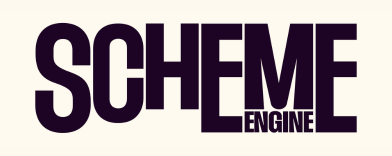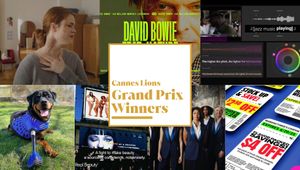
Behind the Oscar-Winning Caption Revolution

“Closed captioning is probably one of the biggest – if not the biggest – inclusion tools in the world. It’s present on nearly every TV and streaming platform globally, reaching billions of people. But, despite its scale and impact, the system hasn’t evolved at the same pace as the rest of the entertainment industry,” says Bruno Mazzotti, SVP, executive creative director at advertising agency FCB Chicago.
While the likes of cinematography, VFX and sound design have continuously pushed boundaries over the decades, captioning has remained largely the same since the ’70s. This presents a huge opportunity – a chance to revolutionise the current system, elevating what captions can do, emotionally and narratively, for the deaf and hard of hearing.
So, FCB Chicago partnered with the Chicago Hearing Society (CHS) and Rakish Entertainment to create ‘Caption with Intention’, a groundbreaking new caption design system which uses animation, colour, and variable typography to convey not just the dialogue in film and TV, but the speaker’s identity, and the emotion, tone, and pacing.
Himself a CODA (Child of Deaf Adults), Bruno explains that the spark of the idea originated from So A Ryu, a hard-of-hearing designer at FCB. “She highlighted a critical gap in current captioning systems: that deaf and hard of hearing audiences often miss key emotional and narrative elements because the captions simply don’t keep up with the storytelling.”
This was something Bruno had experienced in his own home growing up, where captioning played a central role for his parents. “With the privilege of hearing, I was always aware of when captions lagged behind, flattened the tone, or failed to represent overlapping dialogue accurately. I could see and hear everything my parents were missing. That perspective helped shape the execution of the system.”
Having these experienced creative voices involved “made everything more urgent and personal” for the team, providing a dual perspective to help challenge the idea of what ‘standard’ captioning should – or could – be. “This wasn’t just about innovation, it was about honouring real experiences and making sure the final product truly serves the people it’s meant for.”
Bringing Rakish Entertainment on as a key creative partner, FCB worked closely with the CHS to learn more about the shortcomings in the current system, narrowing in on three foundational pillars: synchronisation, intonation, and character identification.
An iterative process of audience testing followed, applying different type-design and animation solutions to acclaimed films, and presenting them to panels of deaf and hard of hearing audiences to get their feedback. “We tested everything, from typography to motion, on dozens of iconic film scenes,” says Bruno. “‘Barbie’, ‘Pulp Fiction’, ‘Forrest Gump’, ‘Whiplash’... It was a long process of showing, adjusting, and learning.”

Through this, they uncovered how certain captions could make people feel excluded, or change the meaning of a scene entirely. One moment in particular stood out during a test involving clips from ‘The Dark Knight’.
“One participant noticed that the captions used different fonts for Bruce Wayne and Batman. He asked why those were different for the same actor,” explains Bruno. “When we explained that the difference was because Batman speaks in a deeper, more-affected voice than Bruce Wayne, he was amazed. It was the first time he’d understood that.
“He'd only learned right there in testing that the characters had different voices. And learned that those subtle vocal shifts were part of the storytelling. Now, through captions, he could have a deeper understanding of the film. It was an eye-opening moment for all of us.”
The panels also offered broader observations, which were crucial in shaping ‘Caption with Intention’, like how often captions lag behind the actual dialogue, or how humour and sarcasm get lost entirely. “Seeing the tool actually work in real time during those tests felt like watching magic happen. It gave the team absolute clarity that we were on the right path.”
From a technical standpoint, the team had to be mindful of key standards like FCC compliance, legibility, contrast, and timing. However, the focus was always on ensuring the new system would tangibly improve the experience for deaf and hard of hearing people. “The result is a flexible layer that can sit on top of existing caption workflows, enhancing them without disrupting compatibility, and finally catching up to the emotional richness of the films they serve.”
One big challenge was to find the balance between captions that are expressive enough to communicate tone, but without becoming distracting or gimmicky. This meant listening very closely to feedback. “Eventually,” says Bruno, “we found a visual language that felt intuitive. Honest.”

Above: A Caption with Intention test - illustrative purposes only; no partnership with the direct production studios and their partners.
The captioning technology has already been recognised for its contribution to new industry standards with an Academy Award of Merit – an Oscar statuette – a process initiated by Rakish Entertainment co-founder, and member of The Academy, Marc Forster.
A particularly special moment occurred when the team presented the project to the Academy’s Board, which included Oscar-winning deaf actress and activist, Marlee Matlin. “Her reaction, and the feedback she gave, couldn’t have been more supportive. It was a deeply emotional moment for everyone involved, and gave the team even more confidence in the importance of what we were building.”
‘Caption with Intention’ has officially been added to The Academy of Motion Picture Arts and Sciences’ list of representation and inclusion standards that are required for films to be eligible for Best Picture consideration, starting next year. “That’s a huge milestone, not just for this project, but for the future of accessible filmmaking,” says Bruno, reflecting on the achievement.
“It’s massive. For a captioning project to be recognised at that level means people are finally seeing accessibility as more than a checkbox, and instead as a space for innovation and emotional impact. It’s already opened a lot of doors – conversations with studios, tech partners, and advocacy groups we couldn’t have reached otherwise.
“More than anything, it legitimised the idea that inclusive design belongs at the centre of the industry, not in the margins. The idea is that captions should get the same level of attention as sound design or editing, for example. For deaf and hard of hearing audiences, captions are the experience, so they deserve that care.”
Going even further, Bruno says that access is “a right” – a notion that influenced the team to make ‘Caption with Intention’ completely open source for other studios, production companies and platforms to use. “The more people build on top of this, the better it gets. It’s plug-and-play for the most part, and we’re developing onboarding resources to make adoption even easier. The idea is to make it as frictionless as possible.
“We’re working on partnerships with major streamers, testing live captioning in broadcast scenarios, and expanding language support,” he adds. “But the long-term vision is even bigger. We want this to be the starting point for a broader conversation about emotional accessibility in media. It’s just the beginning.”















